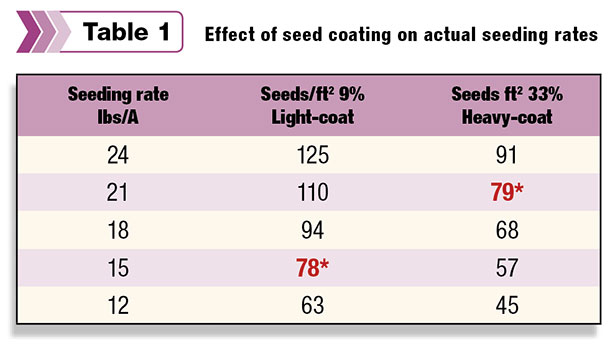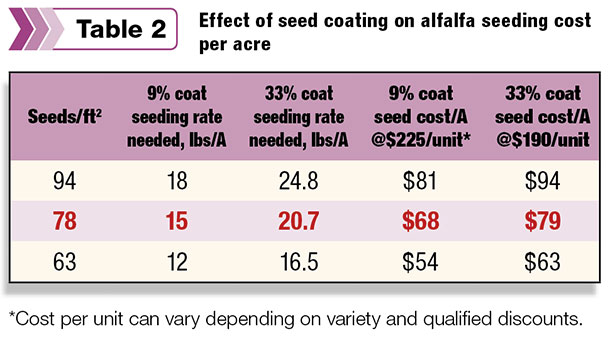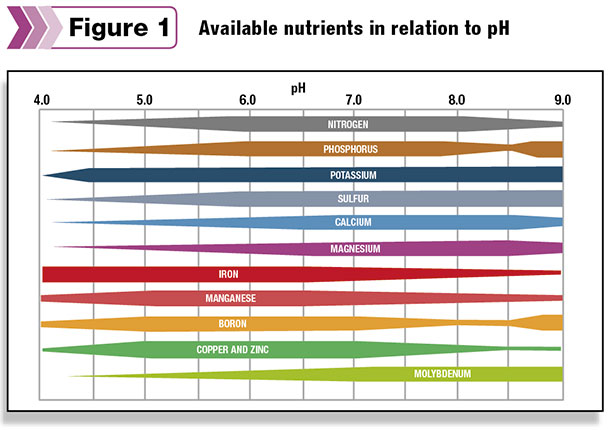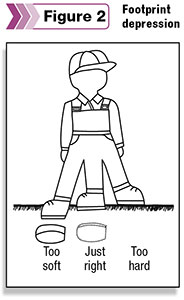The following information is designed to help producers maximize their alfalfa yield by ensuring a fantastic stand is established this spring.
Start with great seed
Starting with great seed involves many factors. The first decision to be made is to ensure that you are choosing a variety that is going to meet your expectations in terms of yield and quality.
Your seed sales representative should be able to provide you with varietal comparisons. You can also use websites: Plant Agriculture from University of Guelph and Alfalfa Variety Comparison from UW extension) to look at yield information from government and university yield trials.
University of Wisconsin trials over multiple years have shown that top-yielding genetics average 0.55 tons per acre per year more than low-yielding genetics.
With hay prices sitting steady at around $0.10 per pound over the past three years, that equates to $121 per acre per year, or a whopping $1,247.81 per unit of alfalfa purchased assuming you are planting 16 pounds of seed per acre and keeping the stand for three years of production.
This calculation goes to show just how important variety selection is and how differences in seed price work out to be very small compared to the yield impact of the actual genetics you are buying.
Another factor to consider is to ensure that the disease and agronomic package of the variety you plan on growing fits the needs of your farm.
If aphanomyces has been an issue for you in the past, you will want to ensure you are growing a variety that is highly resistant to that particular disease.
If potato leafhoppers have plagued your fields and spraying is not something you wish to do from a management perspective, maybe a potato leafhopper-resistant variety is your best option. Similarly, there are lodging-resistant varieties available on the market if that has been an issue for your operation.
Planting date
Alfalfa requires much lower soil temperatures to germinate than corn or soybeans, 2°C versus 8°C for corn or 13°C for soybeans. This is why we are able to plant earlier in the spring than many other crops.
Being able to plant earlier due to lower temperature requirements does not, however, change the fact that with all three crops we need to ensure the ground is fit from a moisture and seedbed preparation perspective prior to planting.
Generally, we expect spring seeding to occur between April 1 and May 15. This timing provides the seeds and seedlings with the least moisture stress and potential for crusting problems.
For summer-seeded alfalfa, the goal is to have the crop in the ground by Aug. 15 at the absolute latest. Alfalfa seedlings need a minimum of six weeks of growth prior to a killing frost (-5°C) to grow large enough and put down enough root reserves to survive the winter and thrive in the spring.
Planting rate
General recommendations for seeding rate range between 12 and 18 pounds of pure live seed (PLS) per acre. The key to the previous sentence was pure live seed.
Seeding 15 to 18 pounds is a good starting point, as this will generally leave us with 80 to 90 seeds per square foot, which should translate into 45 to 50 seedlings within a month. Reading your seed tags prior to planting is critical to ensuring you are planting at the correct rate.
Seed coating (Tables 1 and 2) and percentage of total germination are the most important factors to be aware of as you calculate how many pounds of actual seed to plant to achieve your desired seeding rate in PLS.

Some companies use a 33 percent limestone coating on their seed, meaning that you are already down to only 67 percent of the weight of your seed being PLS before you multiply that number by percentage of total germination.
If, for this example, we say that percentage of total germination is 90 percent, then we end up with only 60 percent of the actual weight we will be planting as PLS. To achieve 15 pounds of PLS per acre at planting, our actual planting rate would have to be 25 pounds per acre.
Field preparation
The first step to field preparation is to ensure that soil tests have been taken to determine fertility needs. This is important not only from a fertility standpoint but also to ensure that the pH level of the soil is in the correct range to maximize nodule development and nutrient uptake by the plant.

As you can see from Figure 1, a pH between 6.5 and 7 is ideal for alfalfa.
Fields that will be planted to alfalfa should have a firm seedbed to improve seed-to-soil contact and prevent the alfalfa seed from being planted too deep. In clay and loam soils, a planting depth between one-quarter and one-half an inch is perfect.

On sandy soils, planting depths of one-half to 1 inch are recommended. In order to determine whether or not your seedbed is too hard, too soft or just right, think about three-legged Willy from North Dakota State University (Figure 2).
Footprint depression is a quick and easy method to determine if your seedbed is the correct firmness to plant. If your boot sinks in about half an inch, or just the sole goes into the ground, things are just right to plant.
Nurse or companion crops
It seems strange that we would never consider planting our corn or soybeans with a nurse or companion crop, and yet with alfalfa this is a much more common practice.
The only real reason to seed alfalfa with a nurse crop is for erosion control during early stand establishment. Prior to the availability of herbicides, nurse crops were used as competition for weeds.
This would no longer be considered a best practice as research performed in Ontario has shown that nurse crops are in fact seen as highly competitive weeds by the alfalfa and will significantly reduce alfalfa yield over the life of the stand.
Following the above recommendations will have you well on your way to growing a productive alfalfa stand that exhibits the longevity you are looking for.
If management and fertility are looked after over the life of the stand, you should be rotating a great, productive stand of alfalfa into corn and capturing the nitrogen and soil health benefits it can provide. PD
Robert Larmer is with DuPont Pioneer.








